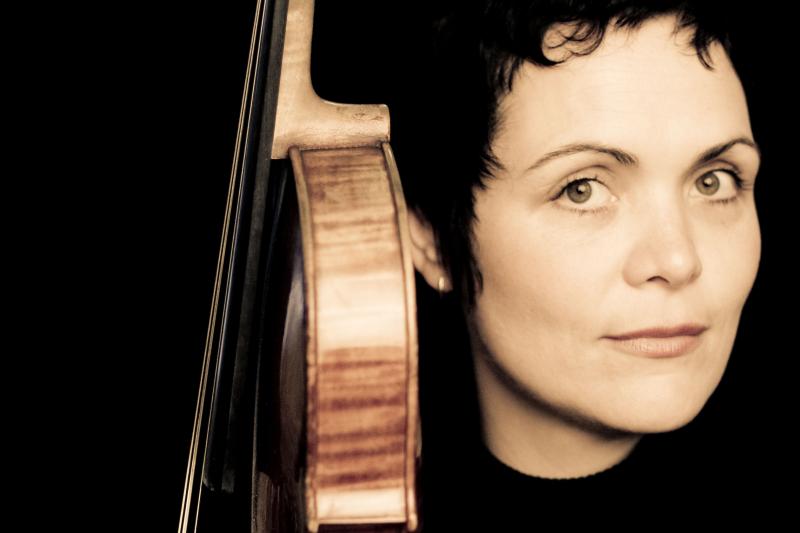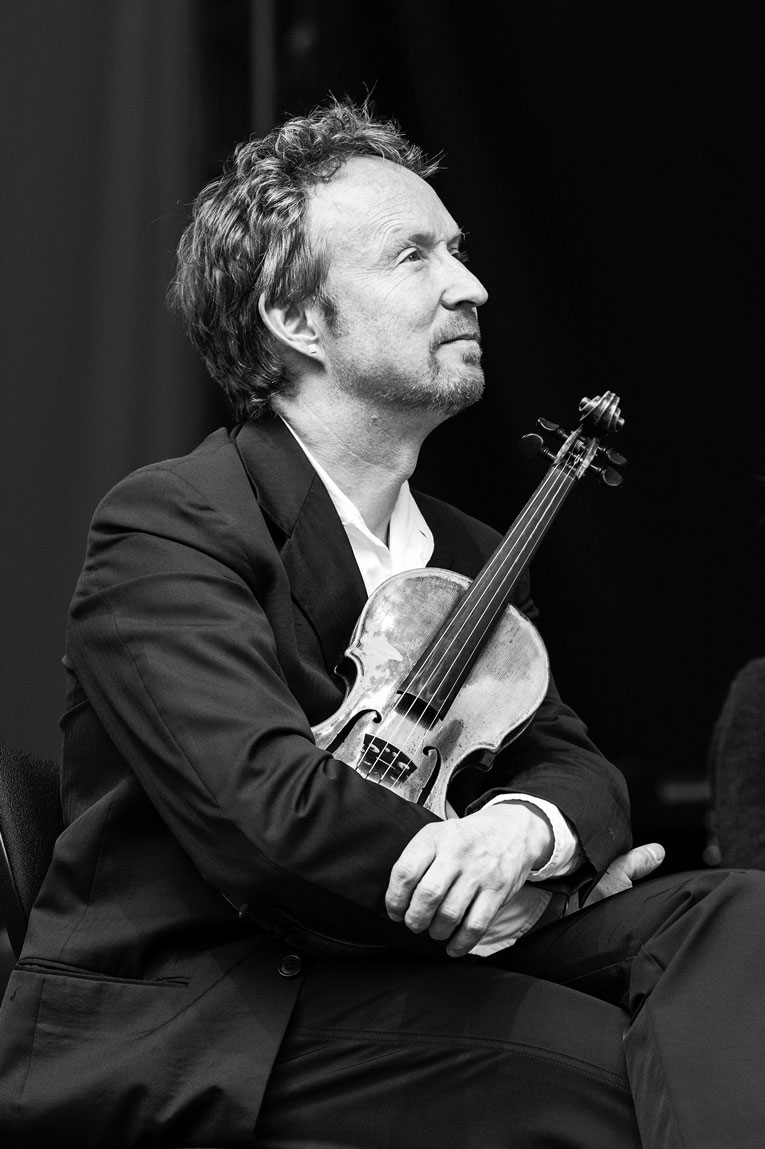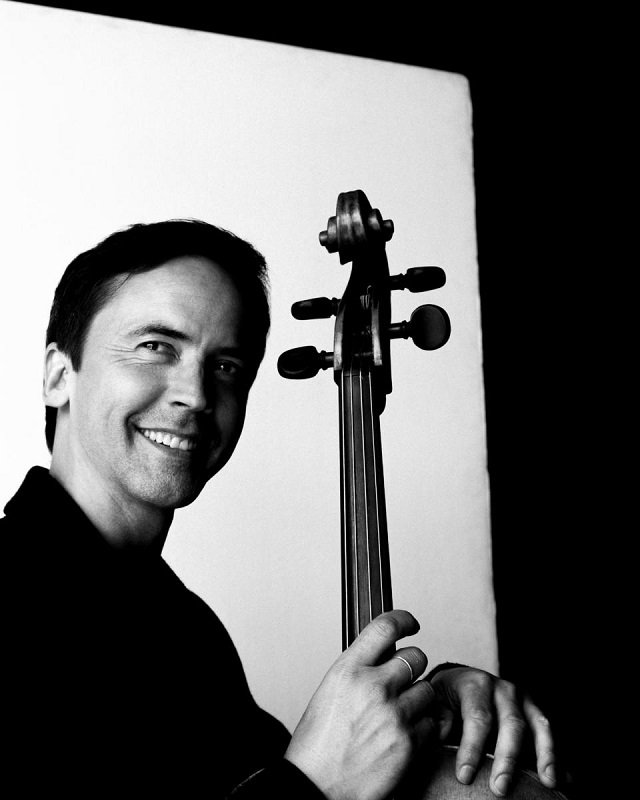Daniel Sepec, Tabea Zimmermann, Jean-Guihen Queyras, Wigmore Hall review - the viola is a star | reviews, news & interviews
Daniel Sepec, Tabea Zimmermann, Jean-Guihen Queyras, Wigmore Hall review - the viola is a star
Daniel Sepec, Tabea Zimmermann, Jean-Guihen Queyras, Wigmore Hall review - the viola is a star
Beethoven's story told through his string trios makes for a long but rewarding evening

Six weeks ago, the Ernst von Siemens Music Foundation announced that it the winner of its prestigious and extremely valuable main annual prize for 2020 "to a composer, performer, or scholar who has made outstanding contributions to the world of music" will be the viola player Tabea Zimmermann.
This Beethoven year is producing some remarkable things, and this opportunity to engage with the whole of Beethoven’s oeuvre for string trio on one evening and to hear it played at such an astonishing level was a very great pleasure indeed. Zimmermann's trio with German violinist Daniel Sepec, (pictured below courtesy of Deutsche Kammerphilharmonie Bremen, where he is concertmaster/soloist) and French cellist Jean-Guihen Queyras is a remarkable unit. All are soloists in their own right, but clearly bring a particular passion and purpose to this group.
 It was a long concert. The whole programme lasted three hours and 40 minutes including two intervals, but the time passed unbelievably quickly. Misha Donat’s thoughtful programme note added to the experience too. He points out that as Beethoven assimilated the great Mozart Divertimento in E-flat major, K563, and transported it into his own musical world, he was already working in the with structures longer than the classical four-movement structure, and thereby sowing the seeds for his later experiments in form in the late quartets. He also draws attention to what an astonishing work the C minor trio from Op. 9 is, and makes the case well that it is a more successful work than the C minor quartet from the Op. 18. set.
It was a long concert. The whole programme lasted three hours and 40 minutes including two intervals, but the time passed unbelievably quickly. Misha Donat’s thoughtful programme note added to the experience too. He points out that as Beethoven assimilated the great Mozart Divertimento in E-flat major, K563, and transported it into his own musical world, he was already working in the with structures longer than the classical four-movement structure, and thereby sowing the seeds for his later experiments in form in the late quartets. He also draws attention to what an astonishing work the C minor trio from Op. 9 is, and makes the case well that it is a more successful work than the C minor quartet from the Op. 18. set.
The facts remain that the Beethoven quartets are better known than these trios, that the quartets tell a longer story of development through Beethoven’s life than these trios from the 1790s, so we will inevitably tend to listen to the trios through the prism of the quartets. And yet these are anything but ‘student’ works. They inhabit a world that is clearly Beethoven’s. And what is constantly remarkable is how light and airy the textures in a trio can become. As Donat has said elsewhere, “the transparency of the texture in a trio forces the composer to think contrapuntally, in horizontal rather than vertical terms.” Towards the end of the evening, Sepec had really found his stride as a soloist telling long and convincing and characterful stories. And throughout the evening Sepec, Zimmermann and Queyras were performing astonishing feats of airiness of texture, making us complicit in their adventures on the boundaries of silence.
 One of the main tasks of the violinist and the cellist here is to make the viola audible, and Sepec and Queyras (pictured left) achieved that admirably. Zimmermann is such an astonishing player, one is drawn into what she is doing anyway. String players around me in the audience were talking during the intervals in a complete sense of awe about her: her effortlessly even bowing arm, the quality of her ‘short bowing’, the way she manages to give just the right weight and emphasis to Beethoven’s rebellious offbeats. She also has an astonishing capacity to give flow and a shape to what might seem the simplest or blandest of, say, an accompanying arpeggio. One young player told me she was completely captivated by the sense of pacing, the astonishing freedom and collective improvisatory feel that all three members of the trio were bringing to the music.
One of the main tasks of the violinist and the cellist here is to make the viola audible, and Sepec and Queyras (pictured left) achieved that admirably. Zimmermann is such an astonishing player, one is drawn into what she is doing anyway. String players around me in the audience were talking during the intervals in a complete sense of awe about her: her effortlessly even bowing arm, the quality of her ‘short bowing’, the way she manages to give just the right weight and emphasis to Beethoven’s rebellious offbeats. She also has an astonishing capacity to give flow and a shape to what might seem the simplest or blandest of, say, an accompanying arpeggio. One young player told me she was completely captivated by the sense of pacing, the astonishing freedom and collective improvisatory feel that all three members of the trio were bringing to the music.
I found myself fascinated by less technical, simpler things. There are musicians who can convey the whole emotional world that a piece of music inhabits through their facial expressions - the late great cellist Valentin (Volya) Berlinsky comes to mind – and Tabea Zimmermann does that too. As the trio is about to enter the distinctive and different emotional world of each and every Beethoven movement, Zimmermann wordlessly signals the mood that the music will capture. Before leading us into the poise and concentration of the adagio con espressione of the great C minor trio Op. 9, she placed the viola on her knee and waited for a moment in stilled concentration. And before the festive dance of the allegretto alla polacca from the Serenade Op. 8 there was a infectiously winning smile. Each time the tone is set. Magisterially.
People are understandably staying away from concerts at the moment. By the end of the evening, when we sang Jean-Guihen Queyras a "Happy Birthday" at 10.40pm, the hall felt very depleted. Better times will return, as will concerts that are not just as completely fulfilling as this one, but also completely full.
- The concert was live-streamed and is available on YouTube
- More classical music reviews on theartsdesk
rating
Explore topics
Share this article
The future of Arts Journalism
You can stop theartsdesk.com closing!
We urgently need financing to survive. Our fundraising drive has thus far raised £49,000 but we need to reach £100,000 or we will be forced to close. Please contribute here: https://gofund.me/c3f6033d
And if you can forward this information to anyone who might assist, we’d be grateful.

Subscribe to theartsdesk.com
Thank you for continuing to read our work on theartsdesk.com. For unlimited access to every article in its entirety, including our archive of more than 15,000 pieces, we're asking for £5 per month or £40 per year. We feel it's a very good deal, and hope you do too.
To take a subscription now simply click here.
And if you're looking for that extra gift for a friend or family member, why not treat them to a theartsdesk.com gift subscription?
more Classical music
 Solomon, OAE, Butt, QEH review - daft Biblical whitewashing with great choruses
Even a top soprano and mezzo can’t make this Handel paean wholly convincing
Solomon, OAE, Butt, QEH review - daft Biblical whitewashing with great choruses
Even a top soprano and mezzo can’t make this Handel paean wholly convincing
 Two-Piano Gala, Kings Place review - shining constellations
London Piano Festival curators and illustrious friends entertain and enlighten
Two-Piano Gala, Kings Place review - shining constellations
London Piano Festival curators and illustrious friends entertain and enlighten
 Echo Vocal Ensemble, Latto, Union Chapel review - eclectic choral programme garlanded with dance
Beautiful singing at the heart of an imaginative and stylistically varied concert
Echo Vocal Ensemble, Latto, Union Chapel review - eclectic choral programme garlanded with dance
Beautiful singing at the heart of an imaginative and stylistically varied concert
 Scott, Irish Baroque Orchestra, Whelan, RIAM, Dublin review - towards a Mozart masterpiece
Characteristic joy and enlightenment from this team, but a valveless horn brings problems
Scott, Irish Baroque Orchestra, Whelan, RIAM, Dublin review - towards a Mozart masterpiece
Characteristic joy and enlightenment from this team, but a valveless horn brings problems
 Classical CDs: Voice flutes, flugelhorns and froth
Baroque sonatas, English orchestral music and an emotionally-charged vocal recital
Classical CDs: Voice flutes, flugelhorns and froth
Baroque sonatas, English orchestral music and an emotionally-charged vocal recital
 Kanneh-Mason, Britten Sinfonia, Shave, Milton Court - a grin and a big beaming smile
A pair of striking contemporary pieces alongside two old favourites
Kanneh-Mason, Britten Sinfonia, Shave, Milton Court - a grin and a big beaming smile
A pair of striking contemporary pieces alongside two old favourites
 theartsdesk at the New Ross Piano Festival - Finghin Collins’ musical rainbow
From revelatory Bach played with astounding maturity by a 22 year old to four-hand jazz
theartsdesk at the New Ross Piano Festival - Finghin Collins’ musical rainbow
From revelatory Bach played with astounding maturity by a 22 year old to four-hand jazz
 First Person: Manchester Camerata's Head of Artistic Planning Clara Marshall Cawley on questioning the status quo
Five days of free events with all sorts of audiences around Manchester starts tomorrow
First Person: Manchester Camerata's Head of Artistic Planning Clara Marshall Cawley on questioning the status quo
Five days of free events with all sorts of audiences around Manchester starts tomorrow
 Goldscheider, Brother Tree Sound, Kings Place review - music of hope from a young composer
Unusual combination of horn, strings and electronics makes for some intriguing listening
Goldscheider, Brother Tree Sound, Kings Place review - music of hope from a young composer
Unusual combination of horn, strings and electronics makes for some intriguing listening
 theartsdesk Q&A: composer Donghoon Shin on his new concerto for pianist Seong-Jin Cho
Classical music makes its debut at London's K-Music Festival
theartsdesk Q&A: composer Donghoon Shin on his new concerto for pianist Seong-Jin Cho
Classical music makes its debut at London's K-Music Festival

Add comment